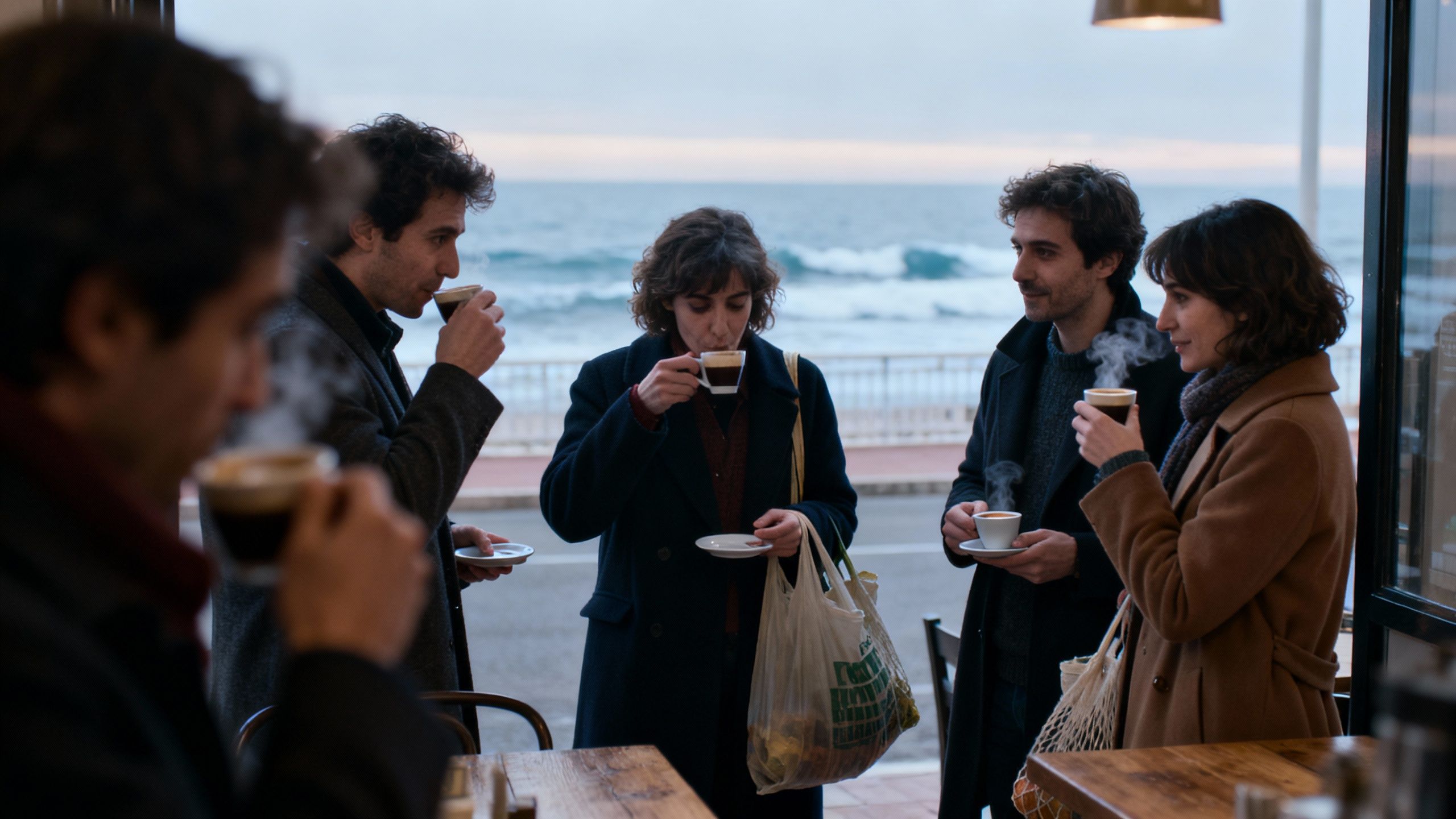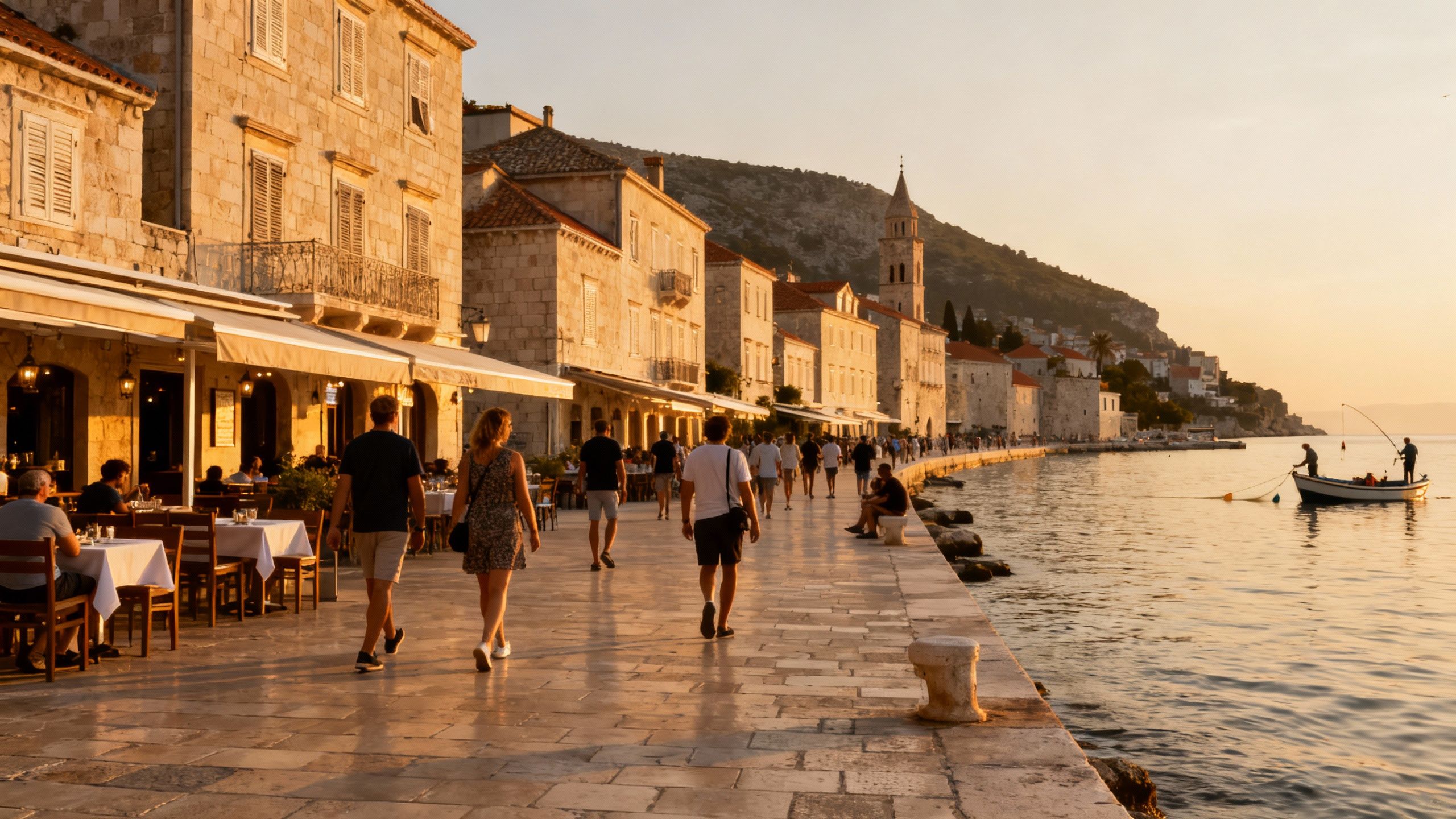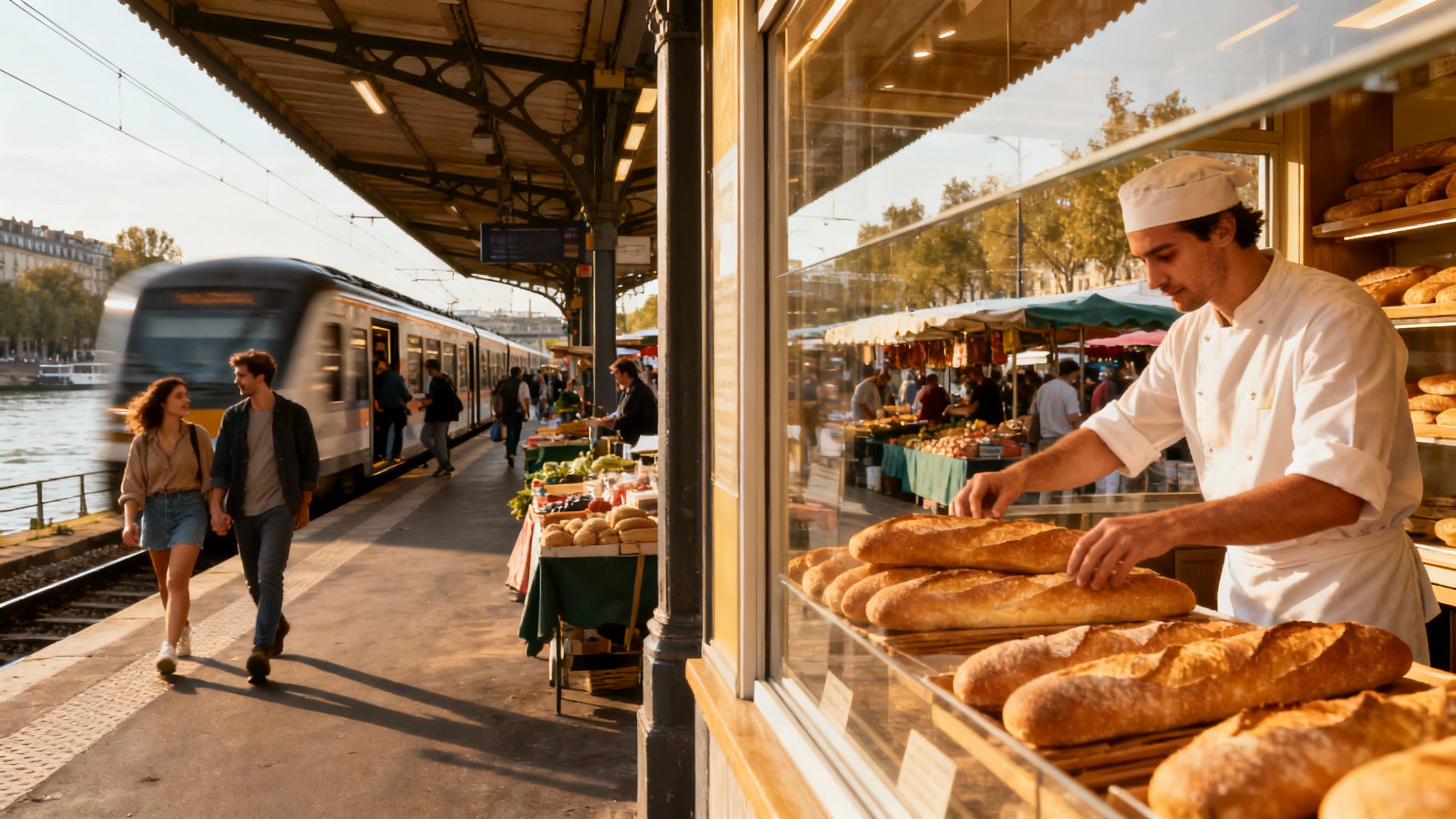Fall for French Urban Life, Then Buy with Data
Forget countrywide myths: France’s urban hubs offer distinct lifestyles and selective opportunities — fall for life, then match it to data and local expertise.
Imagine stepping out at dawn to buy bread at Marché des Enfants Rouges, then wandering through a quiet courtyard in Le Marais before coffee at Café Charlot. In France the rhythm of the day sets the frame for neighbourhood choices — markets, boulangeries and parc benches decide which streets feel like home. For international buyers the choice is emotional first and technical second: you fall for a life here, then you must translate that life into location, property type and realistic expectations. This piece pairs the lived pleasures of France’s urban hubs with data-backed realities so you can fall in love and proceed with clarity.
Living the French Urban Life
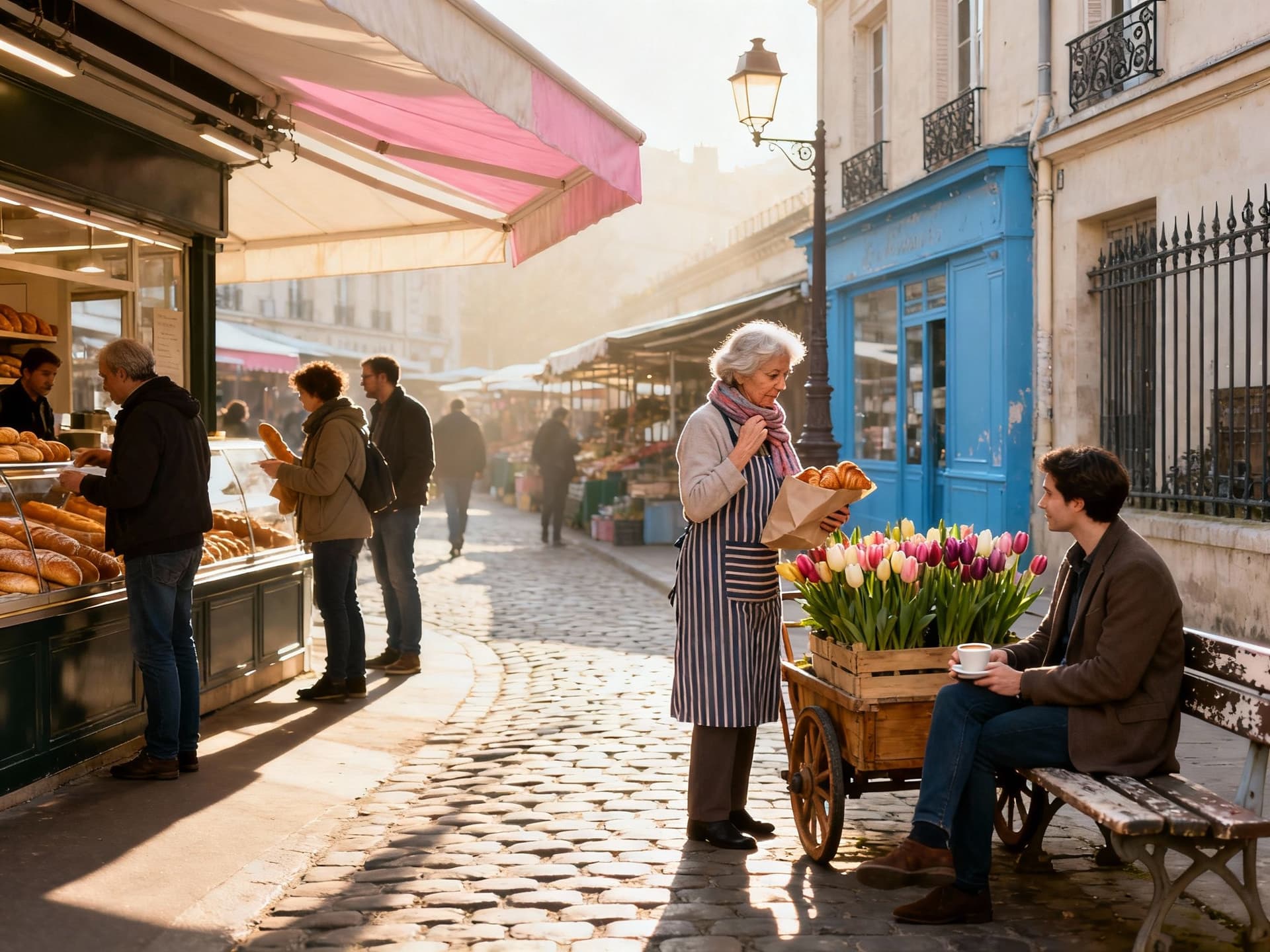
France’s cities are theatrical in different registers. Paris is compact intensity — morning markets, small elevators and arrondissements that feel like distinct villages. Lyon and Bordeaux offer a quieter scale with riverside promenades and neighbourhood cafés where locals gather. Recent INSEE data shows national prices stabilised after a period of decline, but movement varies sharply between Paris, regional capitals and smaller urban centres. That unevenness is exactly what gives international buyers opportunity: the lifestyle you want rarely matches the headline price for an entire country.
Paris: village layers inside a global city
Walk the 3rd and 4th and you’ll feel the same air as locals who never leave the arrondissement. The Marais, Canal Saint‑Martin and parts of the 11th have become international by stealth — speciality grocery shops, Japanese breakfasts and narrow streets where you can still find affordable 40–60 m² apartments. Yet Paris concentrates wealth: certain arrondissements carry prices that reflect inherited holdings and scarcity more than everyday livability. For buyers who want village energy without the absolute price ceiling, consider the Canal/Belleville fringe or commuter towns a single RER stop away.
Provincial hubs: Bordeaux, Lyon, Nantes, Toulouse
Bordeaux’s Chartrons, Lyon’s Croix-Rousse and Nantes’ Île Feydeau tell the same story: quality of life without Paris rents. Average per‑m² in Bordeaux districts like Chartrons sits well below Paris averages, while offering riverfront promenades and Michelin restaurants. Regional capitals now account for the majority of price recovery: INSEE recorded a return to modest growth in provincial second‑hand prices in early 2025. For buyers, that means you can choose a historic apartment with a terrace without paying Paris levels — but you must be selective by neighbourhood.
Making the Move: Practical Considerations
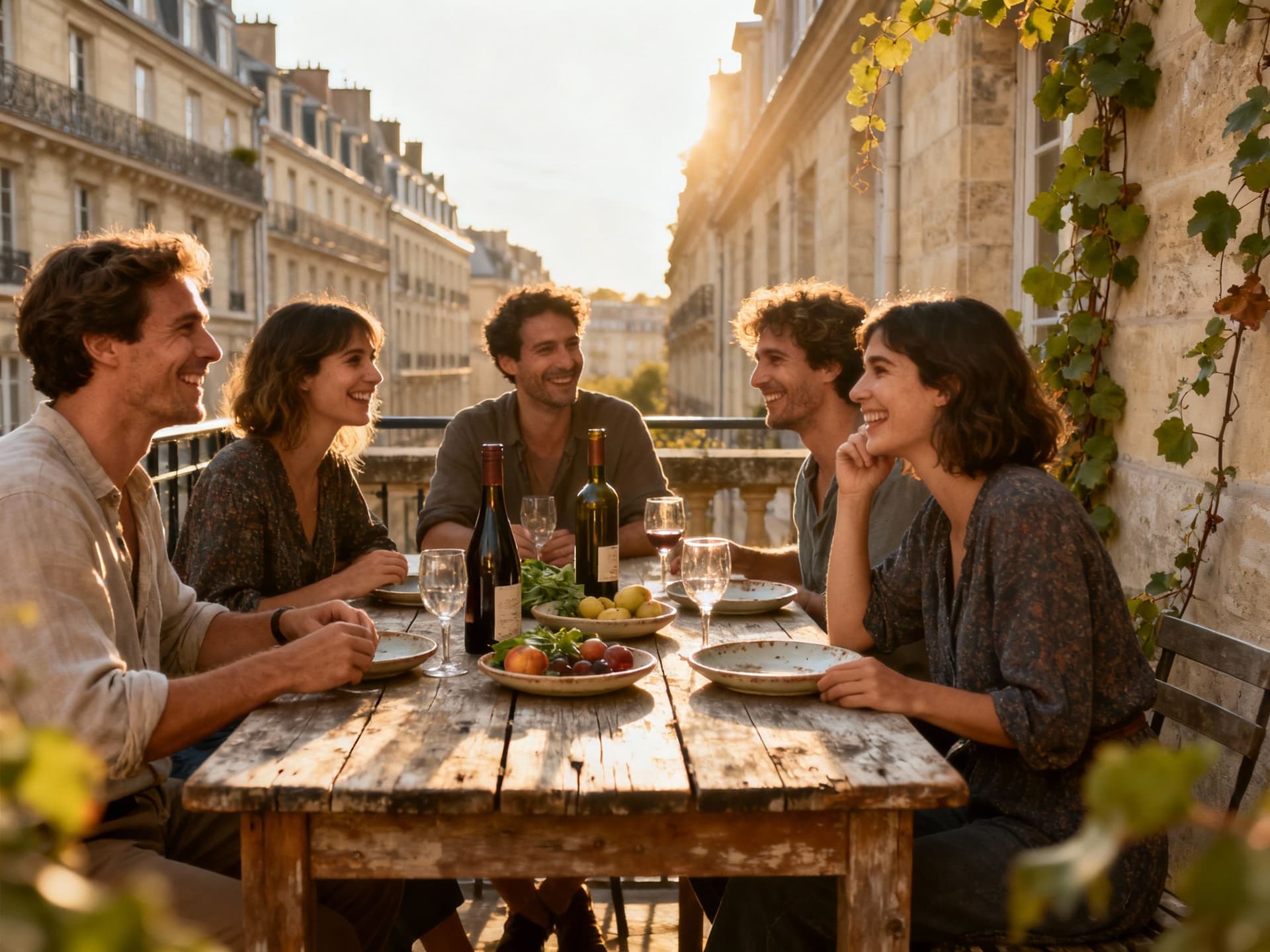
Romance leads the search, but property choice must answer daily life: commute times, grocery runs, winter heating and energy labels. National statistics show provincial prices rose modestly in early 2025, driven by flats more than houses — a reminder that apartments in city centres are where demand concentrates. Before making offers, international buyers should map lifestyle loops (school, market, transit, GP) and compare them with market indicators so emotional preferences meet market reality.
Property styles and how they shape life
Haussmannian flats in Paris prioritise light and layout over outdoor space; in Bordeaux and Lyon, 19th‑century townhouses often include small gardens. New builds in peripheral districts offer insulation and indoor‑outdoor terraces that suit remote work and family life. Consider not only square metres but functional metres: storage, soundproofing, lift access and communal courtyards change daily comfort. If you plan frequent travel, pick proximity to a TGV station as much as a piazza.
Working with local experts who know the life
An agency that understands where you want to live — not just what you can afford — saves time and avoids expensive mistakes. Look for agents who can show comparable lifestyle properties (walkable routes, morning light, noise at night) and who have documented transactions in the neighbourhood. Local notaires and architects are essential when you evaluate renovations, energy performance obligations and contract clauses that affect the livability of the home. Treat agencies as cultural translators: they should explain what sellers mean when they call a place "cosy" or "à rafraîchir."
Insider Knowledge: What Expats Wish They'd Known
Expats often arrive charmed and then discover three repeating truths: the market is local, seasons matter, and paperwork shapes outcomes. Market activity recovered in early 2025 as rates eased, meaning windows for negotiation have narrowed compared with 2023–24. Sellers lean into features that sound appealing but add cost — original beams and exposed stone can mean costly insulation or damp proofing. Ask direct questions about utility bills, co‑ownership fees and recent energy diagnostics; these are the items that reshape monthly life.
Cultural integration and daily social life
Making friends in France often happens through routine: a weekday petanque pitch, language cafés, the same table at the marché on Saturdays. In Lyon, cooking classes and the bouchons connect neighbours; in Bordeaux, weekend vineyard trips do the same. Learn a few social cues — greetings, small talk about food and punctuality for social dinners — and you’ll open doors quickly. Language matters less in some neighbourhoods than others, but learning basic French transforms practical tasks like utility setup and building syndic interactions.
Longer-term lifestyle considerations
Think five and ten years ahead: will you want family space, better schools, or a quieter suburb? Urban centres evolve — tramlines, pedestrian schemes and zoning changes can lift neighbourhood life and value. Balance current pleasure with future growth: a quieter street today may become a lively cultural corridor after municipal investment. Plan renovations with durable materials and energy improvements to reduce operating costs and increase market appeal later.
- Lifestyle checklist before you bid: walk the route at commuting time; visit the nearest market on a Saturday; check winter morning light in the living room; ask the syndic for the last three years of charges; confirm energy diagnostic (DPE) rating.
- Step-by-step for an informed offer: 1) Register a local notaire and request a pre‑contract review; 2) commission a diagnostic and a structural survey; 3) confirm total monthly carrying costs including syndic and taxes; 4) include realistic contingency in offer for renovations; 5) set a closing timeline that accounts for French administrative lead times.
Conclusion: France offers a spectrum of urban lives — Parisian intensity, Bordeaux elegance, Lyon’s balanced energy — and each comes with a pragmatic checklist. Fall in love with the daily scenes first, then use neighbourhood‑specific data and local experts to convert that feeling into a safe purchase. Begin with on‑the‑ground visits, documented comparables and an agent who shows you the parts of life you cannot see in online listings. When lifestyle choices and market facts align, you own not just a property but a place that works.
Swedish expat who moved from Stockholm to Marbella in 2018. Specializes in cross-border legal navigation and residency considerations for Scandinavian buyers.
